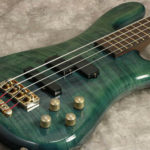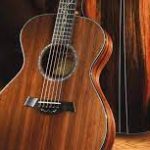
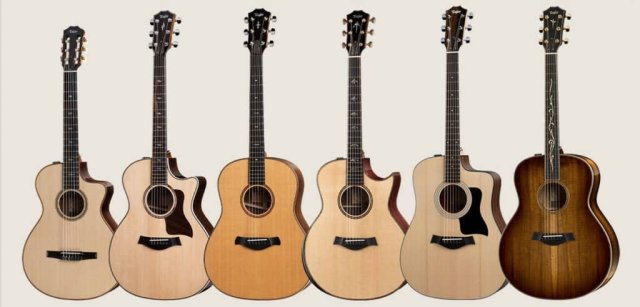
Acoustic Guitar Types
Acoustic guitars vary in style and size, which make each type different. We will explore these differences, and their playability.
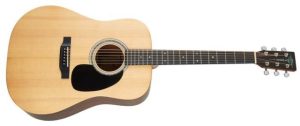
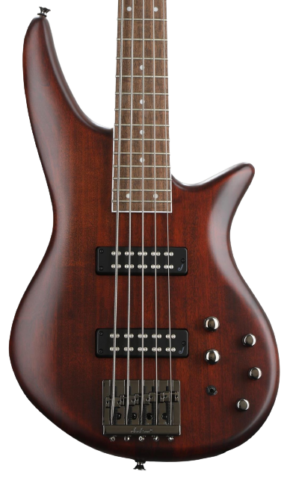
The offset body style was designed with the artist in mind. The poplar body, with quilt maple top, provides a perfect balance, by reducing neck dive. This allows for hours of comfortable playing. A graphite-reinforced bolt-on maple neck with scarf joint design provides rock-solid reliability, while the speed neck contour and 12″-16″ compound radius laurel fingerboard with 24 frets make for lightning-fast playability.
The Spectra Bass JS3Q provides a sound that is as unique as the bassist playing it. Whether it be funk, hard rock or gospel, dual passive Jackson medium-output humbucking pickups create a monstrous low-end growl. A HiMass bridge provides enhanced stability, improved sustain, and a bolder tone.
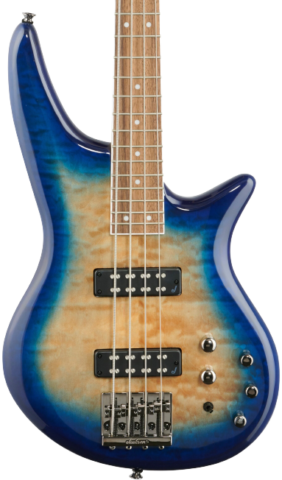
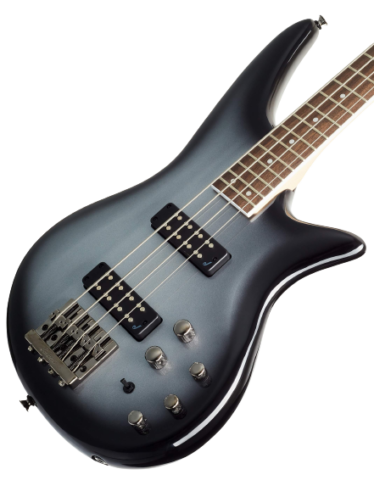
Tone can be further refined and tweaked with a two-way toggle switch for pickup coil splitting, 3-band EQ (active only), blend control and volume control (with push/pull selector to bypass or engage the active circuit for the 3-band EQ).
Dreadnought
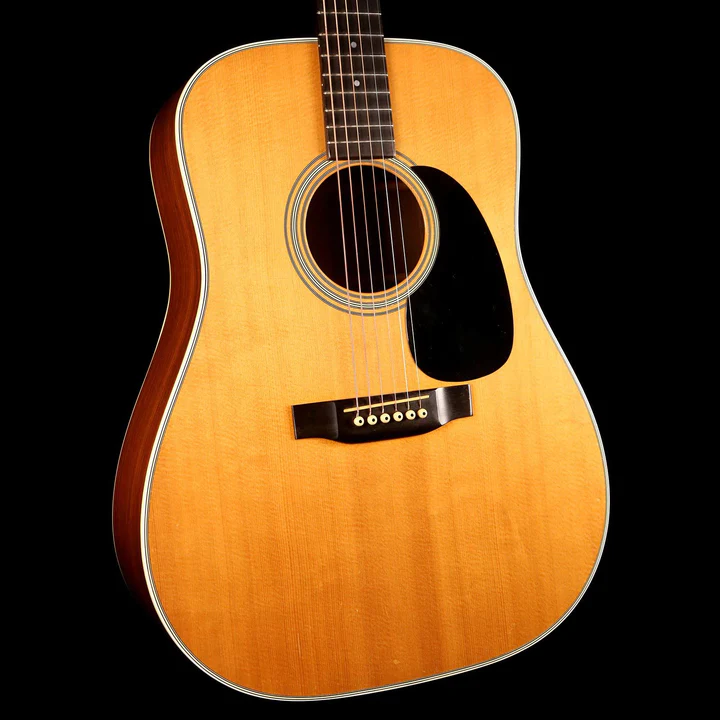
The dreadnought is a classic and the most popular of acoustic guitar body shapes. They are range from budget guitars to the most expensive models.
The Dreadnought was created by Martin in 1916, who named the guitar after the massive British battleships. Of course, this was to reflect the big build of a Dreadnought guitar, with its large, wide soundboard. Typically, a Dreadnought will have a body length of 20” and a width of 16”, with a scale length of 25.4”.
They have a larger shape, which produces a bold, balanced sound, a powerful low-end, a snappy midrange, and bright trebles. This style is popular with rock, country and bluegrass players.
The volume ceiling is high, a it has a strong low-end. Dreadnought works great for aggressive strummers, and flat-pickers.
You can play fingerstyle on a dreadnought, although this certainly isn’t the optimum fingerstyle guitar. Also, due to the larger body size, Dreadnoughts are not as comfortable to hold for smaller players, including children.
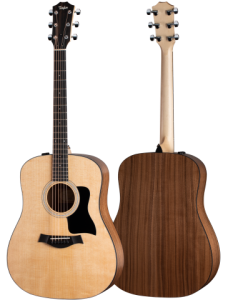
Auditorium/Grand Auditorium
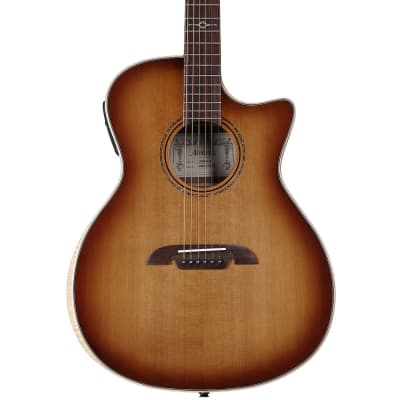
The Auditorium style was originally introduced by Martin, and the Grand Auditorium was created by Taylor Guitars. These two styles are the most popular styles of acoustic guitars in today’s market. They are versatile in tone and performance.
The size of these guitars are between a Dreadnought and a Concert (below). The lower bout width is around 15” on the Auditorium and 16” on the Grand Auditorium. Compared to a Dreadnought, they have a narrower waist, making them comfortable to play while seated.
Auditorium acoustics offer a warm, clear and well-balanced tone and make for a great all-rounder, coping very well with strumming, flatpicking and fingerstyle. As such, they prove popular for all styles of music, from rock and blues to country and folk.
Players wanting a multi-purpose guitar suitable for all styles of music and styles of playing. Also, very good for those with a lighter touch. With a pickup/preamp system, they are also one of the nicest sounding guitar styles plugged in.
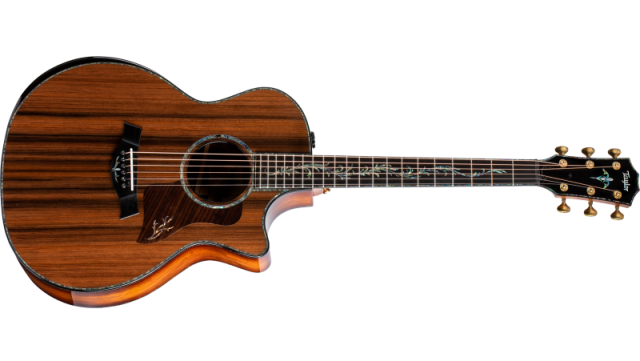
Concert/Grand Concert

A Concert acoustic is one of the smaller acoustic varieties available. They are called ‘O’ sized guitars in the Martin catalouge. A Concert acoustic’s size is between a Dreadnought and a classical guitar in terms of design. It has a slightly shorter and narrower body with a lower bout width of 13.5”.
Like Auditoriums, they also have a narrower waist compared to a Dreadnought, which makes it very comfortable to play with while sitting down. Concert acoustics are also a little shallower in depth, leading to a slightly quieter sound. With less bass response, Concerts tend to have a robust mid-range and clarity in the treble.
As you may expect, a Grand Concert is just a slightly bigger Concert guitar, with a typical lower bout width of 14” to 15”. Ultimately, they offer a marginally bigger sound, but lose some definition because of it.
Due to the smaller size, a Concert acoustic is a great choice for smaller players who don’t want the vintage/boxy tones of a Parlor guitar (see below). Plus, with such an articulate tone, a Concert acoustic is a favored style for fingerstylists.
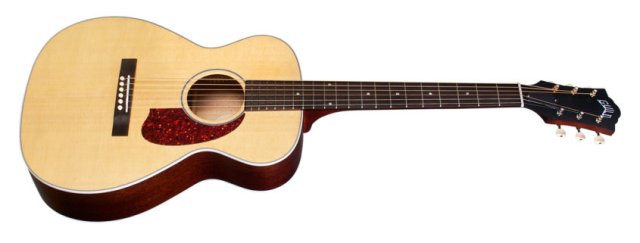
Jumbo
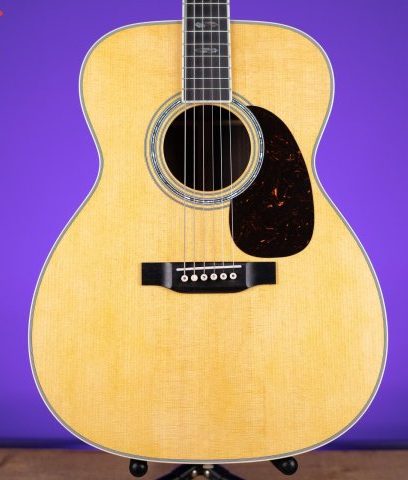
The largest and loudest acoustic guitar shape is the Jumbo. The Jumbo was originally introduced by Gibson in the late 1930s as the J-200. It was designed for professional players, who wanted a big sound. They aren’t as popular now, as they were in the 70’s. Modern jumbos have adapted the advances in acoustic amplification systems, and still very much in use.
Expect widths of up to 17” on the lower bout, which provides huge projection and a high volume ceiling, meaning it can produce louder sounds without distorting. You will often find more elaborate decoration on Jumbos compared to other styles, including specially-designed bridges, fretboard inlays and headstocks.
When it comes to tone, a Jumbo is generally very well-balanced with a big low-end boom. Known as the traditional ‘cowboy guitar’, Jumbos are particularly popular with country players and were a favorite of Elvis Presley, who used this style throughout his career.
Jumbos are for players who want to perform with no additional amplification. Due to the high volume ceiling, Jumbos will suit aggressive playing styles as well. They are big in size and aren’t comfortable for physically smaller players or kids. This also makes Jumbos more cumbersome to travel with. They have a hefty projection, so don’t expect quiet practice sessions.
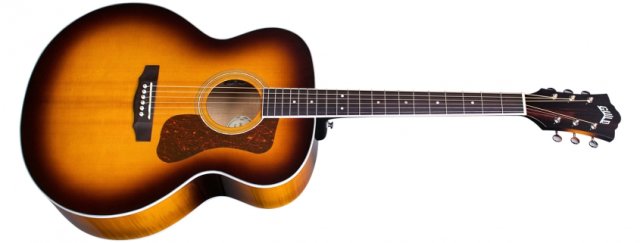
Parlor
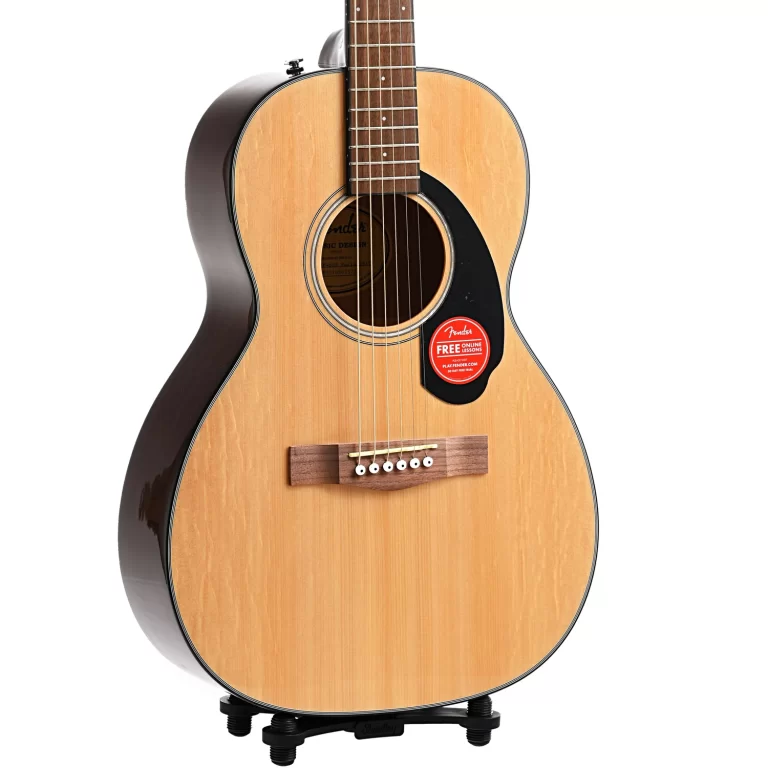
At the opposite end of the size spectrum to a Jumbo, you will find the petite Parlor guitar, which rose to fame in the late 1800s. While its popularity dwindled from the 1950s onwards, these models still have their fans and are still made today by brands such as Fender, Washburn and Ibanez.
This compact style of guitar tends to have a small overall length and an elongated body, retaining a standard nut width to make them suitable for all styles of playing, from strumming to fingerstyle. Tonally, a Parlor guitar is light, focused and quite well balanced, although with less bass and more midrange emphasis.
It also offers the ‘boxy’ sound that vintage players love, which is one of the reasons Parlor guitars are still popular today, appealing to blues, slide and folk players in particular. Of course, they are naturally quieter than big-bodied acoustics too.
Parlor guitars are great for children. Their reduced size makes them easier to hold. They have a lighter projection, so you don’t have to compete with the guitar when playing. They are also great for traveling.
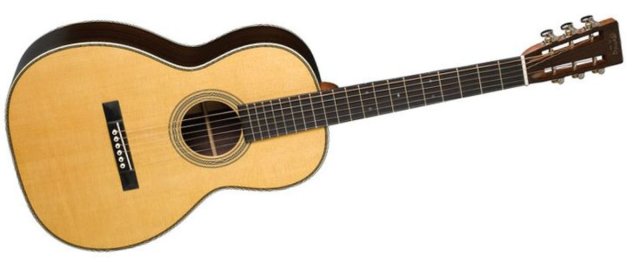
Classical

In a category of its own is the classical guitar, which is a nylon-stringed acoustic (compared to the rest on this list, which feature steel strings). Classical guitars are made by many manufacturers around the world, although they are specialties of brands such as Cordoba, Kremona and Yamaha.
A typical classical guitar differs from a steel-string acoustic in many ways. For example, the neck and fretboard are wider on a classical guitar (usually with a nut width of around 2” or more) providing a more spacious surface area to play with. This surface area is also flatter, compared to the radiused fretboard of a steel-string acoustic.
In terms of scale length, a classical guitar tends to be a bit longer than a steel-string acoustic at around 26”. Style-wise, nylon-stringed models are usually joined to the body at the 12th fret and feature a slotted headstock with open-geared tuners.
This is an easy one – classical guitarists! Or any player who wants the softer, balanced sound of nylon strings including Spanish, fingerstyle and Flamenco players. This style of guitar is also seen as a good choice for beginners, as the strings are easier on the fingers.
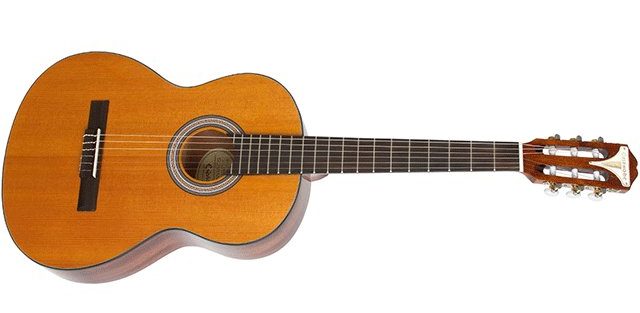
Travel Acoustic
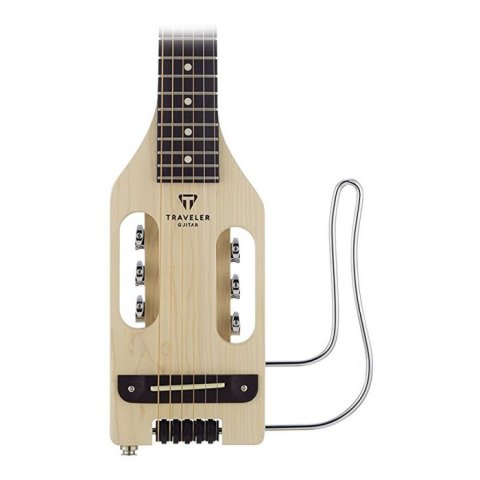
While the Parlor guitar is the smallest of the traditional acoustic guitars, there is a wide range of travel acoustics that are hugely popular.
The majority of these feature a full-size fretboard, a close to full-size scale length (around 23”) and a very similar playing experience to a full-size guitar. In short, while they may be small and cute, they are not toys. In fact, some can cost much more than a standard acoustic!
Traditional shapes go out the window in this category. Of course, you can find the Little Martin or the Baby Taylor, which both look like mini guitars, but next to these you may find something like the Traveler Guitar Ultra-Light, which is completely different!
Most travel guitars will be made of laminated woods to ensure they are light and resistant to temperature and humidity changes. They don’t sound bad but tonally they are nothing compared to a full-size acoustic guitar, while the projection can be very soft due to the small bodies.
Obviously, these guitars are great for travel, whether you are heading across your city on the bus or around the world in a plane. Most of them will come with their own gig bag too, which makes them instantly transportable. This style of guitar is also good for quiet practice due to the curbed projection.

Recommended Acoustic Guitars
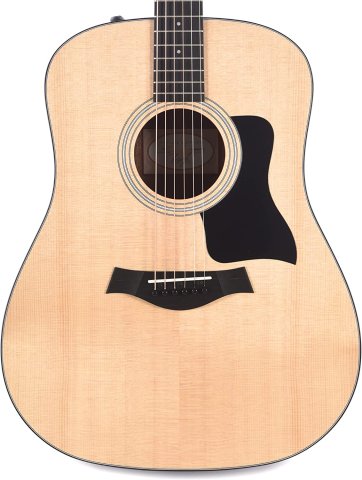
Taylor 110e Sitka/Walnut Dreadnought ES2
This 110e is a great place to enter into the world of Taylor acoustic guitars with plenty of tone and quality at a great value. A Sitka spruce top, walnut back and sides, and ES-2 pickup provide excellent tone whether your plugging in or flatpicking unplugged.
Ibanez AEWC400 AEWC Acoustic Guitar Indigo Blue Burst
This is an outstanding beginner acoustic guitar from Ibanez.
Features:
Walnut Fingerboard; Indigo Blue Burst High Gloss; 6-string Acoustic-electric Guitar with Maple Top
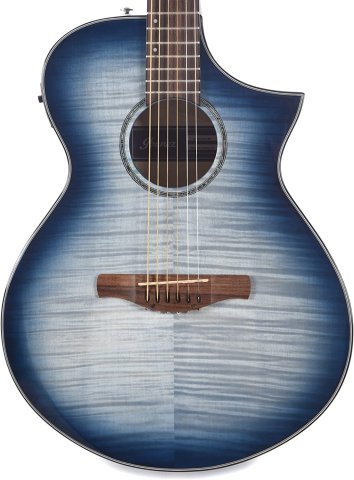
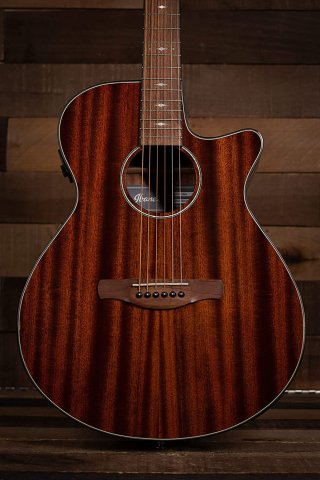
Ibanez AEG62 6-String Acoustic-Electric Guitar
Always committed to instrument design with the player in mind, the Ibanez AEG200 represents a continuation of the popular AEG series. With a shallow body depth, this slimmer acoustic is lightweight and easy to play. The AEG62 features a Sapele construction that results in a rich, bottomless low end with a lively midrange.
Gretsch 6 String Acoustic-Electric Guitar
Whether bluesy porch pickin’ or speakeasy swingin’, the G9520E Gin Rickey Acoustic/Electric with Deltoluxe Soundhole Pickup is a real gone finger-zinger classic.
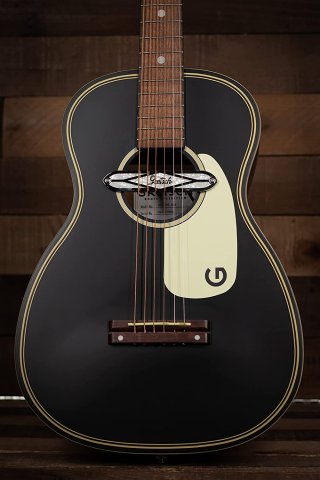
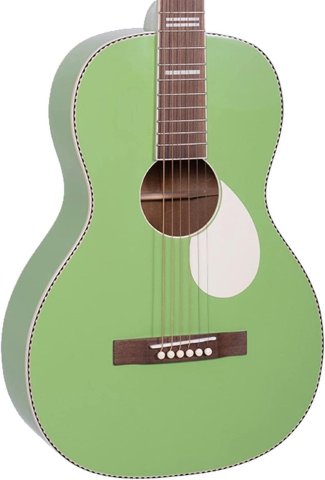
Recording King 6 String Acoustic Guitar
The exclusive Series 7 Single 0 small body sounds as cool as it looks. For small-body lovers, these exclusive Series 7 guitars deliver traditional boxy old-time sound in vibrant finishes guaranteed to draw attention.
Gretsch 6 String Acoustic-Electric Guitar
Whether bluesy porch pickin’ or speakeasy swingin’, the G9520E Gin Rickey Acoustic/Electric with Deltoluxe Soundhole Pickup is a real gone finger-zinger classic.

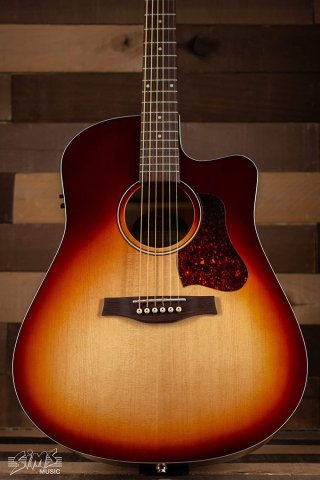
Seagull Entourage CW QIT Acoustic Electric Guitar
Autumn is a time for change and the Seagull Entourage Series has undergone a beautiful change of its own with its new Autumn Burst finish! The Entourage Autumn Burst QIT also boasts other exciting new features, such as an eye-catching white binding, a redesigned pickguard and a richer/shaded finish on the back and sides. It comes equipped with the Godin QIT system; ready to turn it up as you hit the stage and keep you in tune thanks to its built-in tuner.
Geartree Breedlove Pursuit Exotic S Concert Amber CE
An Exquisite Acoustic-electric for the Advancing Player
6-string Acoustic-electric Guitar with Myrtlewood Top
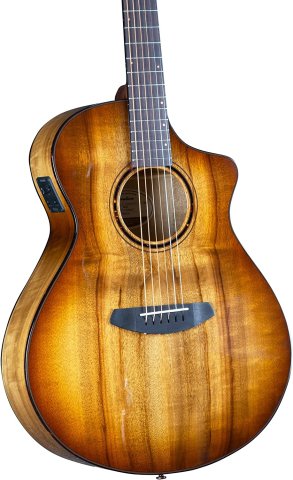
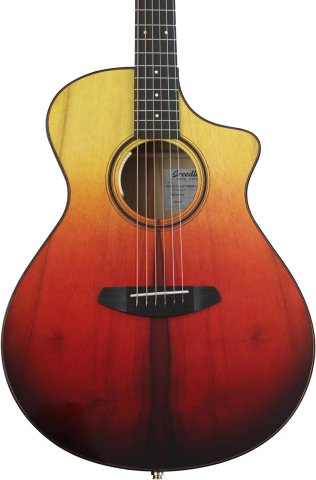
Breedlove Limited-edition Oregon Concert CE Acoustic
This Limited-edition Breedlove is Sure to Turn Heads
Ebony Fingerboard – Tequilla Sunrise
6-string Acoustic-electric Guitar
Takamine Concert Classic 132S Acoustic Guitar
Solid Cedar top classical guitar, Rosewood back and sides, Gold tuning machines. Includes a free Takamine hardshell case, a $160 value! You’ll get a deep mellow tone and impressive volume with ease from this Takamine Classic. Solid cedar top. Rosewood back and sides. Gold machine heads. 3-color mosaic wood marquetry rosette adds an elegant touch.
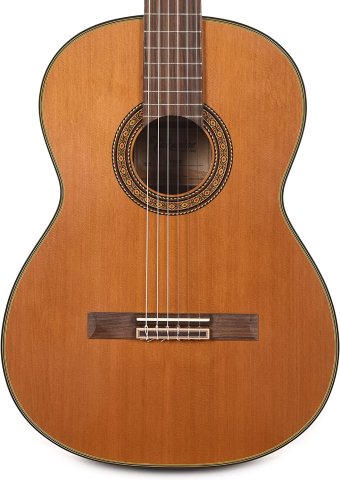
Guitar & Gear Articles


